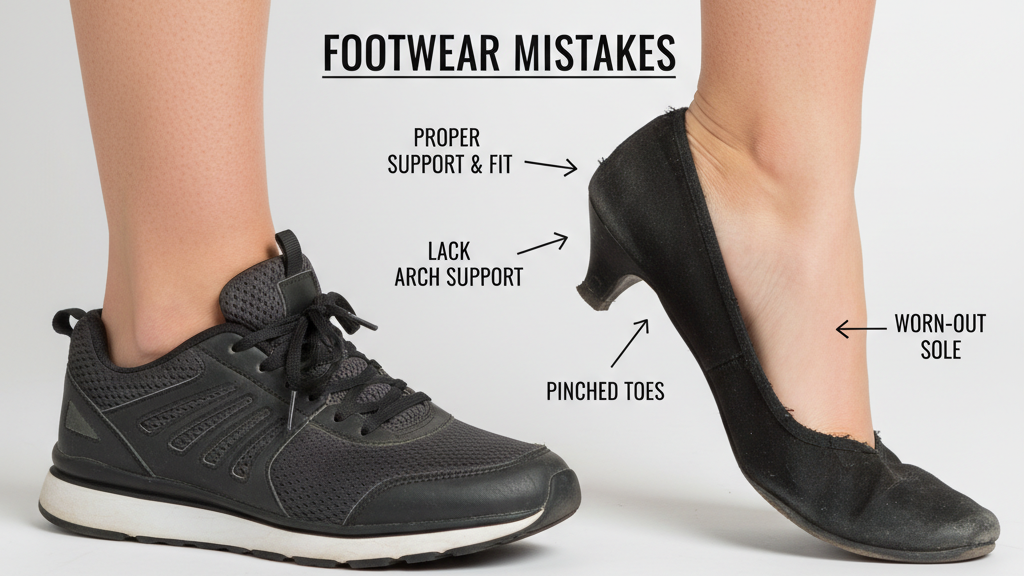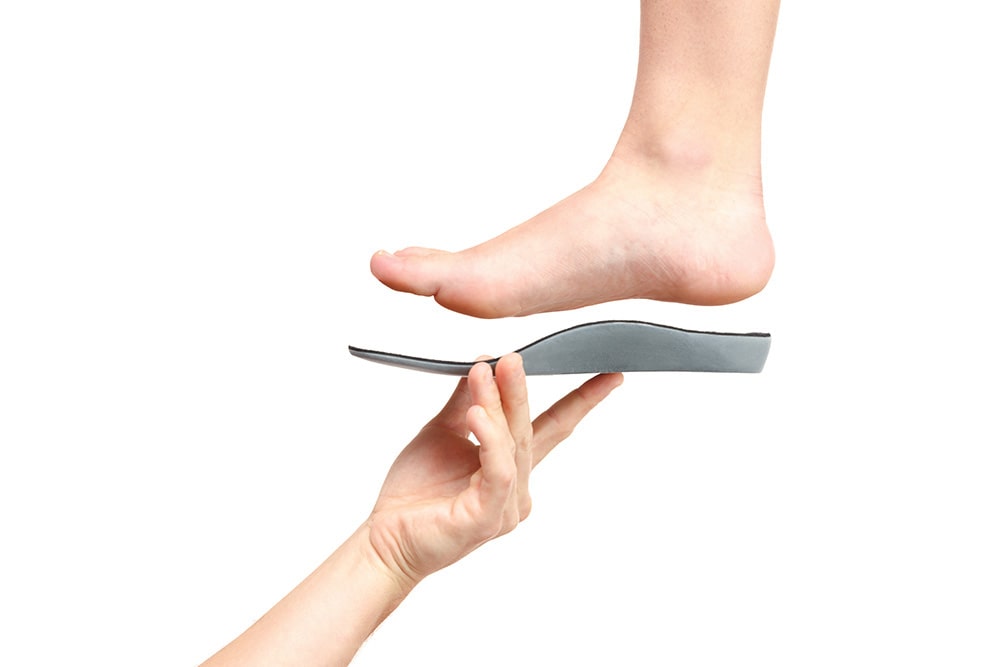Your feet carry you through every step of your day, but did you know that some of the most common footwear mistakes might be causing you pain or even long-term damage? It’s a shocking truth that many people are unaware of—wearing the wrong shoes can lead to ongoing discomfort, foot deformities, and debilitating conditions like bunions, plantar fasciitis, or calluses. The good news is that these issues are often preventable.
At Greater Texas Foot & Ankle Specialist, our lead doctor, Dr. Dean Kim, helps patients identify harmful footwear habits and recommends practical, effective solutions to protect their feet and improve their overall comfort. As a leading podiatrist in Frisco, TX, Dr. Kim understands the profound impact that proper foot care has on your daily life, and that starts with the very foundation you stand on—your shoes.
The information below is designed to empower you with the knowledge to make healthier choices for your feet. Remember, if you are experiencing persistent foot pain, a podiatrist near me is often the first and most important step to getting back on your feet.
Common Footwear Mistakes and Their Astonishing Impact
Many people focus on style over function, a decision that can have serious consequences for foot health. The following are some of the most frequent and impactful footwear mistakes we see in our Frisco clinic:
Mistake 1: Wearing Shoes That Don’t Fit Properly
This is perhaps the most significant footwear error. Shoes that are either too tight or too loose can cause a host of painful problems. Tight shoes squeeze your toes, leading to painful conditions such as ingrown toenails, corns, and hammertoes. Conversely, shoes that are too loose allow your foot to slide and rub, causing blisters, friction, and instability with every step. Over time, this constant pressure and rubbing can deform the foot’s structure, leading to conditions like bunions, which are bony bumps that form at the base of the big toe.
Mistake 2: Ignoring Arch Support
Shoes with flat or unsupportive soles don’t provide the necessary cushioning for your arches. This can create undue stress on the ligaments and tendons of the foot, which can lead to a domino effect of pain in your feet, ankles, knees, or even your lower back. This is an especially common problem for those with flat feet or unusually high arches, as these foot types require specialized support to distribute weight correctly and absorb shock.
Mistake 3: Wearing High Heels Too Often
While high heels can be fashionable, they force your body weight forward, dramatically increasing pressure on the balls of your feet and the toes. Regular use of high heels can lead to a painful inflammation of the ball of your foot, known as metatarsalgia. It can also cause bunions and shorten your calf muscles over time, leading to tightness and strain even when you’re not wearing heels.
Mistake 4: Using Worn-Out Shoes
Old shoes lose their cushioning, structure, and support. The midsole, in particular, can compress and flatten, meaning it no longer absorbs the impact of walking or running effectively. Continuing to wear worn-out shoes can increase your risk of injuries, from stress fractures to a painful condition called plantar fasciitis. This is why a simple assessment of your shoe’s condition is a key step in preventing pain.
Mistake 5: Prioritizing Fashion Over Function
While a sleek design might catch your eye, shoes designed solely for style often lack the essential features for foot health, such as a wide toe box, adequate cushioning, and a supportive sole. This mistake can exacerbate existing foot problems and create new ones, making stylish but unsupportive shoes a painful long-term investment.
How to Fix These Footwear Mistakes
The good news is that many of these issues can be resolved or prevented by making a few simple, positive changes. Here’s how you can take control of your foot health:
1. Get Professionally Measured: Your feet can change size over time due to factors like age, weight gain, or pregnancy. Always have your feet measured, both in length and width, and try on shoes in the afternoon when your feet are at their largest.
2. Choose Shoes with Good Arch Support: When shopping for new shoes, always check for built-in arch support. If your shoes don’t have it, or you have a specific foot condition, consider over-the-counter orthotics or, for a truly personalized solution, custom orthotics prescribed by a professional like Dr. Dean Kim.
3. Limit High Heel Use: Save high heels for special occasions and opt for lower heels or flats with cushioning on a daily basis. When you must wear heels, consider switching to more supportive shoes whenever possible to give your feet a break.
4. Replace Shoes Regularly: A general rule of thumb is to replace athletic shoes every 300–500 miles or as soon as they show signs of significant wear, such as a compressed midsole or uneven tread. This is especially important for runners and athletes.
5. Prioritize Comfort and Fit: When you try on new shoes, walk around the store to ensure they feel comfortable from the start. There should be ample toe room—about a thumb’s width between your longest toe and the end of the shoe—and a secure, non-slip heel fit. Never assume you can “break in” a shoe; if it’s uncomfortable initially, it’s not the right shoe for you.
6. Consider Your Activities: The right shoe for a marathon is not the same as the right shoe for a business meeting. Ensure your footwear is appropriate for your intended activity to prevent injury and provide the necessary support.
7. Don’t Ignore the Small Issues: A persistent blister or a painful corn is your body’s way of signaling a problem. Don’t ignore these warning signs, as they can lead to more serious conditions down the line. A foot doctor can quickly address these issues.
8. Learn to Lace Properly: The way you lace your shoes can make a big difference in how they fit and feel. For example, if you have a high arch, a lacing pattern that skips the middle eyelets can reduce pressure on the top of your foot.
9. Check for Unwanted Items: From a small pebble to a bent insole, a quick check of the inside of your shoe before putting it on can prevent an otherwise painful experience.
10. Rotate Your Footwear: Wearing the same pair of shoes every day doesn’t give them a chance to air out and dry, which can lead to bacterial and fungal growth. Rotating between two or more pairs of shoes allows them to last longer and helps maintain better foot hygiene.

When to See a Foot Specialist
If you’re experiencing persistent foot pain, have visible deformities like bunions or hammertoes, or are struggling with recurring injuries, it’s time to see a podiatrist. A skilled professional like Dr. Dean Kim at Greater Texas Foot & Ankle Specialist can evaluate your specific condition, provide a proper diagnosis, and create a personalized treatment plan. This may include treatments such as custom orthotics, targeted physical therapy, or even advanced procedures like foot wart removal.
Step Into Healthier, Happier Feet Today
Don’t let footwear mistakes hold you back from living an active, pain-free life. Protect your feet with proper shoes and expert care. Whether you need a diagnosis for chronic pain or just a professional opinion on your footwear, Dr. Dean Kim and the team at Greater Texas Foot & Ankle Specialist are here to help.
Call Greater Texas Foot & Ankle Specialist at (469) 384-2135 to schedule an appointment with Dr. Dean Kim and take the first step toward healthier, happier feet today!


